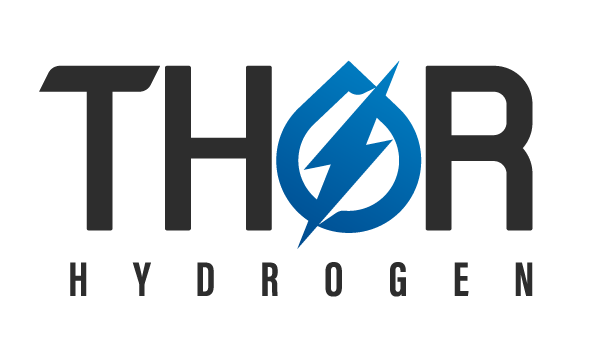a day of reflection & reconciliation
September 30th is Canada’s National Day for Truth and Reconciliation, a day for us to renew our pledge to approach each other with better understanding and to seek reconciliation through our positive collective action. Today we make that pledge and place it at the centre of our purpose. Bruce Wilson
The preface and the accompanying article was written by Iron & Earth Director Jordan Koe, colleague and friend, who is a member of the Tetlit Gwitch’in First Nation. The article appeared recently in both the Hill Times and the National Observer.
On this day of national reflection, we must confront the uncomfortable truth that we have just begun our journey of reconciliation. The Indigenous communities whose treaties built this country deserve the justice of reconciliation and deserve tangible acts that recognize the disparity between indigenous Canadians and non-indigenous Canadians. Practical acts of reconciliation, be they through individuals or communities, are the means by which we realize a healed and prosperous future. The weight of this day is to pause at our place in Canadian history and to see ourselves in the continuum of our communities. Indigenous history predates the Canadian continuum, and we are now entering the era of rectification. It is the duty of this nation to see itself truthfully and carve a path forward where indigenous peoples are in their rightful place as the living regalia of their ancestral homes. Reconciliation is all of our responsibility, and through the recognition of the profound history of indigenous communities, we may honor the survivors, and we may one day see a reconciled Canada.
Healthy Indigenous Communities Require Healthy Housing
Across Canada Indigenous communities were instructed to “Stay Home” in housing conditions known to be actively hazardous to Indigenous families health. Two pandemic years, and a national tragedy or two later, the liberal government have unveiled their 4.3 billion dollar plan to address the long known disaster that is Indigenous Community Housing. For Indigenous families, staying home further strained the existing housing infrastructure by mandating overcrowding, which in turn exacerbated mold growth, and general building envelope fatigue. Each successive Canadian Government’s attempt at correcting this historical injustice has fallen short of their intended goals. Persisting even under meaningful shifts in policy and funding, Indigenous community housing remains a blight on the Canadian cultural landscape. Designing a meaningful solution to address the historical persistence of Indigenous Housing Poverty requires more than throwing billions of dollars at the problem. An investment of this size has the potential to both function as a stimulus to indigenous communities, nurture capacity building, and create generative and sustainable approaches to housing security.
By day I work in a Wsanec Community on Vancouver Island and am inundated by calls from the community for housing that is safe, healthy, and which meets their cultural needs. Though each community grapples with other systemic issues, such as intergenerational poverty, housing insecurity is transnationally ubiquitous. Non-Indigenous Canadians ought to ask themselves, as they too face an unprecedented housing crisis, what does a housing-secure Canada look like? Does a housing secure Canada include Indigenous Communities? What historical injustices in Canada are worth rectification? If not Indigenous Housing, what then is worthy of summoning the collective will to rectify?
The governmental mechanism that administers Indigenous housing in Canada is known as the “Section 95 – On-Reserve Non-Profit Housing Program”. Delivered by the Canadian Mortgage and Housing Association, this program has historically been the primary mechanism that finances the construction of housing on every reserve in Canada. Traditionally housing development practices consisted of unilateral implementation without meaningful consultation or understanding of intergenerational community development. The systemic myopia of on-reserve housing has fostered an intergenerational crisis of housing poverty. We know from long experience that the established order of housing financing and governance is actively harming indigenous family. What then is the plan for the coming 4.3-billion-dollar investment?
Managed responsibly, 4.3 billion dollars, has the potential to build a meaningful amount of housing. But great housing does not come from good intentions alone. Community appropriate housing comes from competent design, skilled labour, and inclusive collaboration. With labour shortages in nearly every sector, the federal government must provide clarity on who will bid on these development contracts. Where are the architects and contractors who can design and build the housing that communities need and do this efficiently, cost-effectively, at scale and in a timely way that responds to the urgent need.
Well, the answer is simple; the communities themselves must take control of the funding. 4.3 billion dollars has the potential to be both an economic stimulus for indigenous communities and a practical act of reconciliation. What is needed is a meaningful investment in the training component of development, empowering communities to become their own developers. To rise to this challenge, a broad and unified Indigenous response is required, where standardization and replication become key to driving costs down. We need a coalition of Indigenous-led designers and builders to establish a range of culturally and geographically appropriate dwellings that can be constructed at scale through novel and sustainable building practices. This 4.3 billion dollars of funding must flow through all channels of Indigenous communities and maximize every dollar’s impact on the health, safety, and welfare of Indigenous families.
One thing is certain, the days of top-down, exploitative development contracts must end. What is needed is investment in indigenous communities to become both design team and labor force for their own projects. And, with their communities fully immersed in the design and development process, these projects will surely be more successful, last longer, and become the pride of their communities. Upon the next call to “Stay at Home”, Indigenous families deserve to shelter in healthy homes, not simply to keep them safe from Covid, but to enjoy those conditions for general wellbeing that are foundational to all the peoples of Canada.
Jordan Koe


